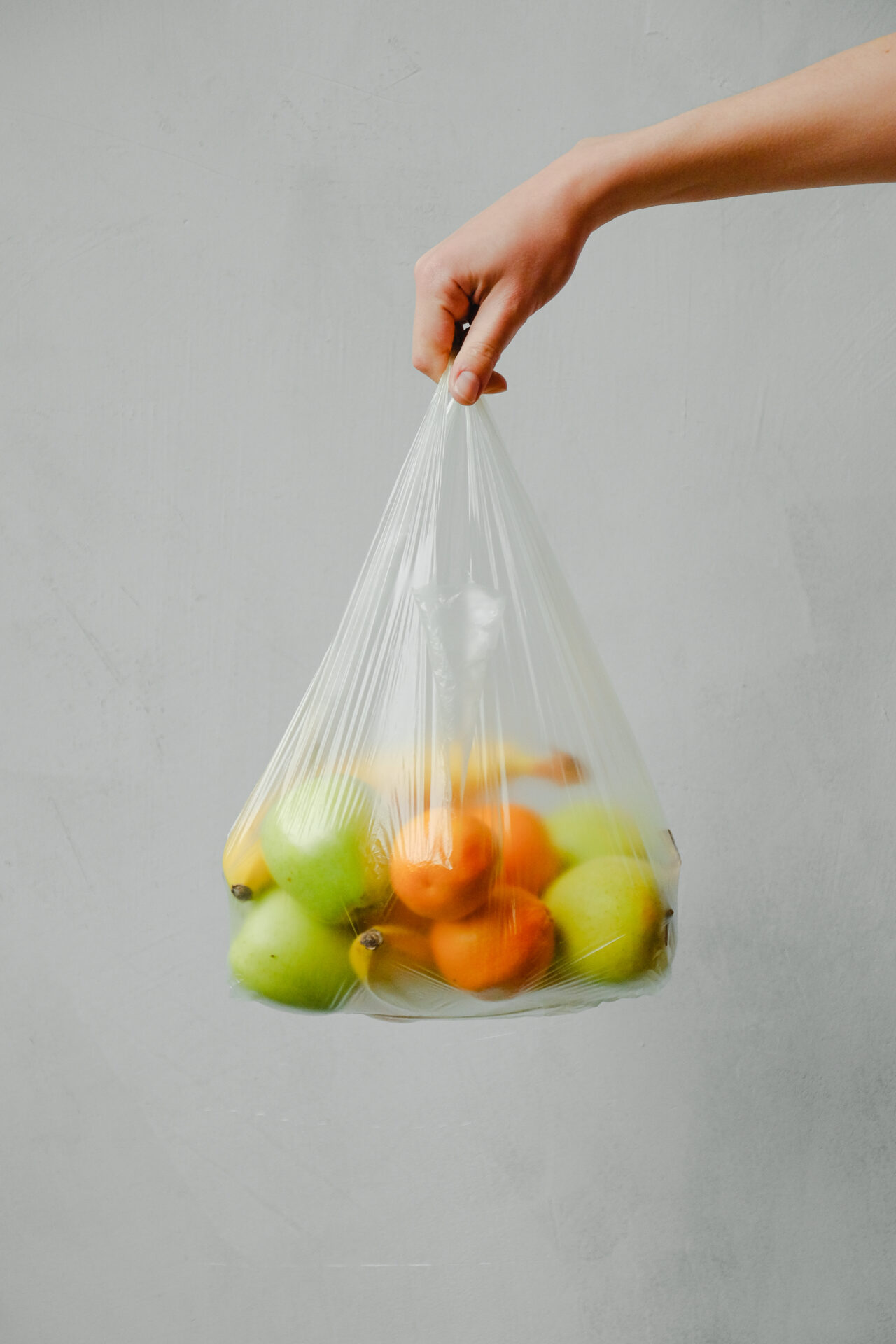Welcome to our latest article, Plastic-Free Living for Nature Lovers: Tips for Eco-Friendly Explorations. As an increasing number of people become more environmentally conscious, it is crucial to be aware of the impact our habits have on the world around us, particularly when it comes to plastic consumption. In this comprehensive guide, we will delve into the importance of adopting a plastic-free lifestyle, while also providing useful tips and strategies to help you enjoy nature in a more eco-friendly and responsible manner. From sustainable travel and hiking practices to conscious consumer choices and waste management, this article aims to equip nature lovers with the knowledge and tools essential for preserving the environment we so deeply cherish. So, join us as we embark on this enlightening journey towards a greener, plastic-free world.
Eco-Friendly Travel Essentials: Plastic-Free Gear for Adventurers
As a nature lover and an eco-conscious traveler, it’s vital to consider the impact of the products we use during our adventures. Making simple changes to our travel gear can significantly reduce our plastic footprint and protect the environment we love. In this subsection, we’ll discuss some essential plastic-free gear that every adventurer should consider incorporating into their trips.
Reusable Water Bottles and Containers
Staying hydrated is crucial for any adventurer, but single-use plastic bottles contribute to a massive amount of waste. Instead, invest in a high-quality reusable water bottle made from stainless steel or glass. Additionally, opt for reusable food containers and snack bags made from silicone or cloth, which can help you reduce your plastic waste while keeping your food fresh.
Biodegradable Toiletries and Personal Care Items
Many personal care items, such as toothbrushes, razors, and travel-sized toiletries, are made from plastic and contribute to pollution. Swap these out for eco-friendly alternatives, such as bamboo toothbrushes, stainless-steel razors, and biodegradable soap and shampoo bars. These items are not only better for the environment but often last longer than their plastic counterparts.
Plastic-Free Luggage and Bags
When selecting luggage and bags for your trips, choose items made from sustainable and durable materials, like organic cotton or hemp, that are free from plastic components. Many eco-friendly brands offer stylish and functional bags that minimize their environmental impact through responsible sourcing and production methods.
Reusable Utensils and Food Wraps
Cut down on single-use plastic cutlery and food wraps by packing your own set of reusable utensils made from bamboo or stainless steel. Additionally, beeswax wraps are an excellent alternative to plastic cling film for covering and storing food, and they can be easily washed and used multiple times.
Solar-Powered Chargers and Gadgets
Embrace the power of the sun by investing in solar-powered chargers and gadgets that can help reduce your reliance on disposable batteries and energy from non-renewable sources. Many solar-powered devices are now available, including chargers for smartphones, cameras, and laptops, as well as lanterns and flashlights for nighttime adventures.
By incorporating these eco-friendly travel essentials into your adventures, you can reduce your plastic footprint and contribute to the preservation of the natural world we all adore. Each small change makes a difference, and together, we can create a more sustainable future for our planet.
Sustainable Hiking Practices: How to Leave No Trace on the Trails
Exploring nature through hiking is a fantastic way to connect with the environment and stay physically active. However, it’s crucial to minimize our impact on the trails to preserve the natural beauty and ecosystems we treasure. In this subsection, we’ll discuss some key sustainable hiking practices, based on the Leave No Trace principles, to ensure that your outdoor adventures are as eco-friendly as possible.
Plan Ahead and Prepare
Before embarking on a hike, take the time to research the trail, regulations, and potential environmental concerns for the area. Familiarize yourself with the local wildlife and plants to avoid disturbing sensitive habitats. Additionally, ensure that you have the proper gear, including plastic-free and reusable items, to minimize waste during your hike.
Travel and Camp on Durable Surfaces
To protect the soil and vegetation of the trail, stick to established paths and durable surfaces, such as rock or gravel. Avoid creating new trails or shortcuts, and refrain from walking on delicate flora. When camping, choose previously used campsites or locations that will not damage the environment.
Dispose of Waste Properly
Pack out all trash, leftover food, and litter to keep trails clean and prevent wildlife from ingesting harmful substances. Use biodegradable soaps and toiletries, and wash at least 200 feet away from water sources to limit contamination. When nature calls, dig a small hole at least 6-8 inches deep and 200 feet from water sources, trails, and campsites to bury human waste.
Leave What You Find
Resist the urge to pick plants, remove rocks, or disturb historical or cultural artifacts. Leave natural and cultural features undisturbed for future generations to enjoy. Also, refrain from building structures, such as cairns or fire rings, that can impact the environment and wildlife.
Minimize Campfire Impact
Campfires can cause lasting damage to the environment and are a leading cause of wildfires. Whenever possible, use a camp stove for cooking instead of making a fire. If you must have a campfire, use established fire rings or create a mound fire to minimize the impact on the ground.
Respect Wildlife
Observe wildlife from a distance, and never feed or approach animals, as this can disrupt their natural behavior and diet. Store food and garbage securely to prevent wildlife from accessing it. Keep pets under control or leave them at home to avoid disturbing wildlife and other hikers.
Be Considerate of Other Visitors
Respect the experience of fellow hikers by maintaining a low noise level and yielding the trail when appropriate. Follow posted rules and guidelines to ensure that everyone can enjoy the outdoors safely and responsibly.
By implementing these sustainable hiking practices, you can ensure your adventures have minimal impact on the environment and contribute to the preservation of the natural world for future generations to explore and cherish.
Green Camping: Tips for a Zero-Waste Outdoor Experience
Camping provides a unique opportunity to connect with nature and escape the hustle and bustle of everyday life. However, it is essential to ensure that our outdoor adventures do not negatively impact the environment. In this subsection, we will explore various tips and strategies to help you achieve a zero-waste camping experience, allowing you to enjoy the great outdoors while leaving a minimal ecological footprint.
Plan Your Meals and Pack Smart
Careful meal planning and packing can significantly reduce food waste and the need for single-use items. Opt for fresh, locally sourced ingredients and avoid overpacking to minimize spoilage. Pack your food in reusable containers and ditch single-use plastic bags, cutlery, and plates. Consider bringing a reusable tablecloth, cloth napkins, and a reusable coffee filter for a more sustainable camping experience.
Choose Eco-Friendly Camping Gear
Investing in high-quality, eco-friendly camping gear can help you create a more sustainable outdoor experience. Seek out tents, sleeping bags, and camping mats made from sustainable materials and free of harmful chemicals. Additionally, opt for solar-powered lanterns and chargers to reduce your reliance on disposable batteries.
Practice Responsible Waste Management
Develop a waste management plan for your camping trip that focuses on reducing, reusing, and recycling. Bring reusable bags or containers to collect and separate recyclables, compostable items, and landfill waste. Ensure that you dispose of all waste responsibly, either at designated campground facilities or by taking it home with you.
Conserve Water and Minimize Pollution
Use biodegradable, eco-friendly soap and personal care products to minimize your impact on local water sources. Collect water in reusable containers and practice water conservation by using minimal amounts for cooking, cleaning, and personal hygiene. Avoid bathing or washing dishes directly in streams or lakes, and always dispose of greywater at least 200 feet away from water sources.
Respect the Campsite and Surrounding Environment
Choose established campsites and avoid trampling on vegetation or disturbing wildlife habitats. Follow the principles of Leave No Trace and ensure that you leave your campsite in the same condition you found it, if not better. This includes dismantling any structures, such as fire rings or shelters, that you may have built during your stay.
Engage in Sustainable Activities
Incorporate low-impact activities into your camping experience, such as hiking, bird watching, or stargazing, which have minimal environmental impact. When engaging in these activities, always follow established trails and guidelines to protect the surrounding ecosystem.
By embracing these green camping tips, you can create a memorable and eco-friendly outdoor adventure that respects and preserves the environment we all love. Adopting a zero-waste approach to camping not only benefits the planet but also enhances your connection with nature, making your experience all the more rewarding.
Responsible Wildlife Encounters: Minimizing Plastic Pollution in Natural Habitats
One of the most captivating aspects of exploring the great outdoors is the opportunity to observe and interact with wildlife in their natural habitats. However, it is crucial to approach these encounters with a sense of responsibility and respect for the environment, including minimizing plastic pollution that can have disastrous consequences for both terrestrial and aquatic ecosystems. In this subsection, we will discuss essential guidelines for responsible wildlife encounters and share practical strategies to help minimize plastic pollution and protect the delicate balance of our planet’s ecosystems.
Keep a Safe Distance and Observe Quietly
When encountering wildlife, always maintain a safe distance and avoid making loud noises or sudden movements that could disturb the animals. Observe their behavior quietly and refrain from attempting to touch, feed, or interact with them in any way. This respectful approach not only ensures your safety and that of the animals but also helps to minimize stress-induced behaviors that could increase their exposure to plastic pollution.
Choose Eco-Friendly Wildlife Tours
When participating in wildlife tours or excursions, opt for operators that prioritize sustainability and eco-friendly practices. Research and select tour providers that have a strong commitment to minimizing plastic waste, protecting natural habitats, and educating visitors about responsible wildlife encounters. By supporting these organizations, you contribute to the preservation of ecosystems and promote responsible tourism practices.
Reduce, Reuse, and Recycle While Exploring
Embrace the principles of reducing, reusing, and recycling during your outdoor adventures to minimize your plastic footprint. Carry reusable water bottles, containers, and utensils, and avoid single-use plastics whenever possible. Dispose of waste responsibly, ensuring that all plastic items are recycled or packed out to prevent them from entering natural habitats and harming wildlife.
Participate in Clean-up Initiatives
Join local clean-up initiatives or organize your own to help remove plastic pollution from natural habitats. By participating in these efforts, you contribute to the protection of ecosystems and the well-being of wildlife, while also raising awareness of the devastating impacts of plastic pollution on our planet.
Spread Awareness and Advocate for Change
Share your knowledge and experiences with others to raise awareness of the importance of responsible wildlife encounters and the need to minimize plastic pollution in natural habitats. Advocate for policies and initiatives that promote sustainable practices, protect ecosystems, and reduce the production and consumption of single-use plastics.
By following these guidelines and actively working to minimize plastic pollution in natural habitats, you can enjoy meaningful and responsible wildlife encounters that contribute to the preservation of our planet’s ecosystems. Your actions, no matter how small they may seem, have the power to create positive change and inspire others to join the movement towards a plastic-free and eco-friendly future.
Top Plastic-Free Destinations: Discovering Earth’s Pristine Ecosystems
Embarking on eco-friendly adventures allows us to experience the beauty of the natural world while minimizing our environmental impact. As more travelers seek out sustainable and plastic-free experiences, several destinations have dedicated themselves to preserving their pristine ecosystems and promoting responsible tourism. In this subsection, we will explore the top plastic-free destinations that not only offer breathtaking landscapes but also encourage visitors to adopt eco-friendly practices during their stay.
Palau: A Pioneering Island Nation in Ocean Conservation
Palau, a picturesque archipelago in the Pacific Ocean, is renowned for its commitment to marine conservation and sustainability. As the first country to ban certain types of sunscreen harmful to coral reefs, Palau has made significant strides in protecting its vibrant marine ecosystems. Additionally, visitors are required to sign the Palau Pledge, a commitment to act responsibly and minimize environmental impact during their stay.
Costa Rica: A Haven for Sustainable Adventure
With its incredible biodiversity and commitment to eco-tourism, Costa Rica has become a leading destination for sustainable travel. The country is home to numerous eco-lodges and sustainable tour operators, many of which have eliminated single-use plastics and implemented strict recycling programs. Costa Rica’s lush rainforests and pristine beaches make it the perfect destination for nature enthusiasts seeking an eco-friendly adventure.
Sweden: A Model for Sustainable Living
Sweden is internationally recognized for its commitment to sustainability and reducing plastic waste. The country boasts impressive recycling rates, and many hotels and restaurants have adopted plastic-free practices. From exploring the picturesque capital city of Stockholm to hiking and kayaking in the country’s vast wilderness, Sweden offers a multitude of eco-friendly experiences for travelers passionate about protecting the environment.
Slovenia: A Green Gem in the Heart of Europe
Slovenia, a small European country boasting striking landscapes and charming cities, has made significant strides in promoting eco-friendly tourism. The country’s capital, Ljubljana, was named the European Green Capital in 2016, and many businesses have since embraced sustainable practices, including eliminating single-use plastics. Slovenia’s stunning natural attractions, such as Lake Bled and Triglav National Park, make it an ideal destination for nature lovers seeking a plastic-free escape.
Galápagos Islands: A Fragile Ecosystem Committed to Conservation
The Galápagos Islands, a UNESCO World Heritage site, are home to a unique array of wildlife found nowhere else on Earth. Recognizing the vulnerability of their ecosystems, the Galápagos have implemented strict regulations to protect their natural resources, including banning single-use plastics. Visitors to the islands can explore the diverse landscapes and encounter endemic species while adhering to responsible tourism practices that prioritize conservation.
By choosing to explore these top plastic-free destinations, you not only immerse yourself in the awe-inspiring beauty of our planet but also contribute to the preservation of these fragile ecosystems. As a responsible traveler, your commitment to eco-friendly practices and plastic-free living can inspire others to join the global movement towards a more sustainable and harmonious relationship with the natural world.





Leave a reply